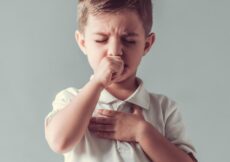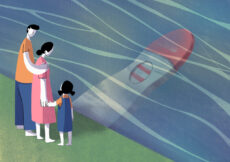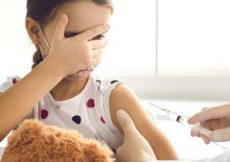A major concern during the beginning of the coronavirus disease 2019 (COVID-19) pandemic was the possibility that SARS-CoV-2, the pathogen responsible for the disease, might spread through surfaces.
Many previous studies indicated that the SARS-CoV-2 could remain active on surfaces for several days; however, no studies have proved the transmission of infection from surface to person. These studies suggested performing environmental monitoring through surface swabs that would help analyze the transmission of SARS-CoV-2. Environmental monitoring acts as a complementary tool to reverse transcriptase quantitative polymerase chain reaction (RT-qPCR) tests in identifying the number of infected people cost-effectively.
A study recently published on the medRxiv* preprint server observed the presence of SARS-CoV-2 RNA in five schools (96 classrooms) in Davis, California (USA), by collecting weekly surface-swab samples from classroom floors and/or portable high-efficiency particulate air (HEPA) units.
Assessment of the environmental sampling strategies
This SARS-CoV-2 environmental monitoring study, piloted from January to August 2021 and collected the floor and/or HEPA filter swab samples in five elementary schools.
To study the efficacy of floor and HEPA-filter samples, the researchers compared SARS-CoV-2 RNA and COVID-19 cases in two of the schools.
Oral swabs were used to collect samples and RT-qPCR was used to quantify SARS-CoV-2 RNA. Before the start of sampling, the detection of SARS-CoV-2 on surfaces was validated by using opportunistic sampling in two locations within six days.
One of two key sampling schemes was applied at each school: (1) only floor or (2) floor and HEPA filter sampling. Nylon fiber oral swabs with an acrylonitrile butadiene styrene (ABS) handle pre-moistened in DNA/RNA shield were used to collect the environmental samples. Samples were processed for RNA extraction on the same day of collection.
The researchers assumed that SARS-CoV-2 virions would accumulate on the external surface of the filters due to air circulation, making HEPA filter sampling more efficient to identify infected individuals than floor sampling.
.jpg)
Positive and negative rooms for SARS-CoV-2 based on floor samples collected in Schools (A) A, (B) B, and (C) C throughout the pilot environmental monitoring study. Episodes with a positive floor sample are marked in red, negative episodes in green, and episodes where no sample was collected are in white. Air filter sampling in Schools A and B started on May 5, 2021 and is denoted by the orange line. No positive air filter samples were detected.
Study results
The researchers compared the two strategies by testing one floor and two HEPA filter samples in 57 classrooms at Schools D and E. At the time of the study, COVID-19 clinical testing was offered free to all schools.
The results showed that HEPA filter sampling had 3.02% and 0.41% positivity rates per filter sample collected for Schools D and E, respectively; however, only 0.48% and 0% positivity rates per sample compared to 0.48% and 0% for floor sampling.
The results depicted that HEPA filter swabs are more sensitive than floor swabs at detecting SARS-CoV-2 RNA in interior spaces.
Further, a confirmed positive environmental sample was obtained during onsite clinical testing in Schools D and E, but interestingly, there were no cases of COVID-19-positive students in the classrooms with positive environmental samples. Hence the positive samples could be attributed to the presence of relic viral RNA from people infected before the start of the monitoring program and/or RNA transported by fomites into classrooms.
Although no infectious viruses were detected in samples with cycle threshold (Ct) values above 30, further testing is needed to evaluate virus viability on various surfaces.
“Portable HEPA filter and floor sampling are environmental monitoring tools that can successfully detect SARS-CoV-2 RNA.”
Conclusions
The study results showed that environmental monitoring tools like HEPA filter and floor sampling could successfully identify SARS-CoV-2 RNA.
However, the study found HEPA filter sampling more efficient compared to floor swabs. HEPA filter testing is effective in detecting SARS-CoV-2 RNA, which helps study the transmission of SARS-CoV-2 in schools with limited participation in clinical testing.
One challenge posed by both HEPA filter and floor sampling methods is in differentiating fresh, relic, and outsider viral RNA. Therefore, additional research is required to differentiate fresh and relic SARS-CoV-2 RNA in environmental samples and to determine Ct thresholds for HEPA filter monitoring that suggest nearby active infections.
*Important Notice
medRxiv publishes preliminary scientific reports that are not peer-reviewed and, therefore, should not be regarded as conclusive, guide clinical practice/health-related behavior, or treated as established information.
Journal reference:
- The challenge of SARS-CoV-2 environmental monitoring in schools using floors and portable HEPA filtration units: Fresh or relic RNA? Rogelio Zuniga-Montanez, David A Coil, Jonathan A Eisen, Randi Pechacek, Roque G Guerrero, Minji Kim, Karen Shapiro, Heather N Bischel, medRxiv, 2021. DOI: https://doi.org/10.1101/2021.11.12.21266178, https://www.medrxiv.org/content/10.1101/2021.11.12.21266178v1



































